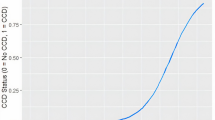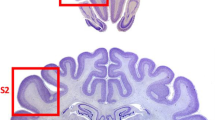Abstract
In the present study, the peripheral blood leukocyte phenotypes, lymphocyte subset populations, and oxidative stress parameters were studied in cognitively characterized adult and aged dogs, in order to assess possible relationships between age, cognitive decline, and the immune status. Adult (N = 16, 2–7 years old) and aged (N = 29, older than 8 years) dogs underwent two testing procedures, for the assessment of spatial reversal learning and selective social attention abilities, which were shown to be sensitive to aging in pet dogs. Based on age and performance in cognitive testing, dogs were classified as adult not cognitively impaired (ADNI, N = 12), aged not cognitively impaired (AGNI, N = 19) and aged cognitively impaired (AGCI, N = 10). Immunological and oxidative stress parameters were compared across groups with the Kruskal-Wallis test. AGCI dogs displayed lower absolute CD4 cell count (p < 0.05) than ADNI and higher monocyte absolute count and percentage (p < 0.05) than AGNI whereas these parameters were not different between AGNI and ADNI. AGNI dogs had higher CD8 cell percentage than ADNI (p < 0.05). Both AGNI and AGCI dogs showed lower CD4/CD8 and CD21 count and percentage and higher neutrophil/lymphocyte and CD3/CD21 ratios (p < 0.05). None of the oxidative parameters showed any statistically significant difference among groups. These observations suggest that alterations in peripheral leukocyte populations may reflect age-related changes occurring within the central nervous system and disclose interesting perspectives for the dog as a model for studying the functional relationship between the nervous and immune systems during aging.
Similar content being viewed by others
Abbreviations
- AD:
-
Alzheimer’s disease
- CNS:
-
Central nervous system
- WBC:
-
White blood cells
References
Baker MA, Cerniglia GJ, Zaman A (1990) Microtiter plate assay for the measurement of glutathione and glutathione disulfide in large numbers of biological samples. Anal Biochem 190:360–365
Blount DG, Pritchard DI, Heaton PR (2005) Age-related alterations to immune parameters in Labrador retriever dogs. Vet Immunol Immunopathol 108:399–407
Bonotis K, Krikki E, Holeva V, Aggouridaki C, Costa V, Baloyannis S (2008) Systemic immune aberrations in Alzheimer’s disease patients. J Neuroimmunol 193:183–187
Bordignon M, Da Dalt L, Marinelli L, Gabai G (2014) Advanced oxidation protein products are generated by bovine neutrophils and inhibit free radical production in vitro. Vet J 199:162–168
Brayne C, Calloway P (1988) Normal ageing, impaired cognitive function, and senile dementia of the Alzheimer’s type: a continuum? Lancet 331:1265–1267
Buckner RL (2004) Memory and executive function in aging and AD: multiple factors that cause decline and reserve factors that compensate. Neuron 44:195–208
Campbell DJ, Rawlings JM, Koelsch S, Wallace JMW, Strain JJ, Hannigan BM (2001) Age-related differences in leukocyte populations, lymphocyte subsets and immunoglobulin Ig production in the cat. Scand J Immunol 54(suppl1):1.24–1.59
Ceron JJ, Eckersall PD, Martinez-Subiela S (2005) Acute phase proteins in dogs and cats: current knowledge and future perspectives. Vet Clin Pathol 34:85–99
Cotman CW, Head E (2008) The canine (dog) model of human aging and disease: dietary, environmental and immunotherapy approaches. J Alzheimer Dis 15:685–707
Day MJ (2010) Ageing, immunosenescence and inflammageing in the dog and cat. J Comp Path 142:S60–S69
De la Fuente M (2008) Role of neuroimmunomodulation in aging. Neuroimmunomodulation 15:213–223
Di Bona D, Scapagnini G, Candore G, Castiglia L, Colonna-Romano G, Duro G, Nuzzo D, Iemolo F, Lio D, Pellicanò M, Scafidi V, Caruso C, Vasto S (2010) Immune-inflammatory responses and oxidative stress in Alzheimer’s disease: therapeutic implications. Curr Pharm Des 16:684–691
Dunn OJ (1964) Multiple comparisons using rank sums. Technometrics 6:241–252
Glade MJ (2010) Oxidative stress and cognitive longevity. Nutrition 26:595–603
Glisky EL (2007) Changes in cognitive function in human aging. In: Riddle RD (ed) Brain aging: models, methods, and mechanisms. CRC Press, Boca Raton, pp 3–20
Halazun HJ, Mergeche JL, Mallon KA, Connolly S, Heyer JE (2014) Neutrophil-lymphocyte ratio as a predictor of cognitive dysfunction in carotid endarterectomy patients. J Vasc Surg 59:768–773
Head E (2013) A canine model of human aging and Alzheimer’s disease. Biochim Biophys Acta 1832:1384–1389
Head E, Liu J, Hagen TM, Muggenburg BA, Milgram NW, Ames BN, Cotman CW (2002) Oxidative damage increases with age in a canine model of human brain aging. J Neurochem 82:375–381
Heaton PR, Blount DG, Devlin P, Koelsch S, Mann SJ, Smith BHE, Stevenson J, Harper EJ (2002) Assessing age-related changes in peripheral blood leukocyte phenotypes in Labrador retriever dogs using flow cytometry. J Nutr 132:1655S–1657S
HogenEsch H, Thompson S, Dunham A, Ceddia M, Hayek M (2004) Effect of age on immune parameters and the immune response of dogs to vaccines: a cross-sectional study. Vet Immunol Immunopathol 97:77–85
Huang X, Reynolds AD, Mosley RL, Gendelman HE (2009) CD4+ T cells for the pathobiology of neurodegenerative disorders. J Neuroimmunol 211:3–15
Huppert FA, Solomou W, O’Connor S, Morgan K, Sussams P, Brayne C (1998) Aging and lymphocyte subpopulations: whole-blood analysis of immune markers in a large population sample of healthy elderly individuals. Exp Gerontol 33:593–600
Kipnis J, Derecki NC, Yang C, Scrable H (2008) Immunity and cognition: what do age-related dementia, HIV-dementia and ‘chemo-brain’ have in common? Trends Immunol 29:455–463
Kipnis J, Gadani S, Derecki N (2012) Pro-cognitive properties of T cells. Nat Rev Immunol 12:663–669
Kraus C, Pavard S, Daniel Promislow DEL (2013) The size-life span trade-off decomposed: why large dogs die young. Am Nat 181:492–505
Kuyumcu ME, Yesil Y, Oztürk ZA, Kizilarslanoğlu C, Etgül S, Halil M, Ulger Z, Cankurtaran M, Arıoğul S (2012) Evaluation of neutrophil-lymphocyte ratio in Alzheimer’s disease. Dement Geriatr Cogn Disord 34:69–74
Landsberg GM, Nichol J, Araujo JA (2012) Cognitive dysfunction syndrome. A disease of canine and feline brain aging. Vet Clin North Am Small Anim Pract 42:749–768
Lawrence J, Chang Y-MR, Szladovits B, Davison LJ, Garden OA (2013) Breed-specific hematological phenotypes in the dog: a natural resource for the genetic dissection of hematological parameters in a mammalian species. Plos One 8(11), e81288
Magaki S, Yellon SM, Mueller C, Kirsh WM (2008) Immunophenotypes in the circulation of patients with mild cognitive impairment. J Psychiatr Res 42:240–246
Milgram NW, Head E, Weiner E, Thomas E (1994) Cognitive functions and aging in the dog—acquisition of nonspatial visual tasks. Behav Neurosci 108:57–68
Mongillo P, Bono G, Regolin L, Marinelli L (2010) Selective attention to humans in companion dogs, Canis familiaris. Anim Behav 80:1057–1063
Mongillo P, Araujo JA, Pitteri E, Carnier P, Adamelli S, Regolin L, Marinelli L (2013) Spatial reversal learning is impaired by age in pet dogs. Age 35:2273–2282
Moyer KL, Trepanier LA (2009) Erythrocyte glutathione and plasma cysteine concentrations in young versus old dogs. JAVMA 234:95–99
Ownby RL (2010) Neuroinflammation and cognitive aging. Curr Psychiatry Rep 12:39–45
Pinchuk LM, Filipov NM (2008) Differential effects of age on circulating and splenic leukocyte populations in C57BL/6 and BALB/c male mice. Immun Ageing 5:1
Radjavi A, Smirnov I, Kipnis J (2014a) Brain antigen-reactive CD4+ T cells are sufficient to support learning behaviour in mice with limited T cell repertoire. Brain Behav Immun 35:58–63
Radjavi A, Smirnov I, Dereki N, Kipnis J (2014b) Dynamics of the meningeal CD4+ T-cell repertoire are defined by the cervical lymph nodes and facilitate cognitive task performance in mice. Mol Psychiatr 19:531–533
Roberts RO, Geda YE, Knopman DS, Christianson TJH, Pankratz VS, Kullo IJ, Petersen RC (2009) Association of C-reactive protein with mild cognitive impairment. Alzheimers Dement 5:398–405
Rosado B, González-Martínez Á, Pesini P, García-Belenguer S, Palacio J, Villegas A, Suarez M-L, Santamarina G, Sarasa M (2012a) Effect of age and severity of cognitive dysfunction on spontaneous activity in pet dogs—part 1: locomotor and exploratory behaviour. Vet J 194:189–195
Rosado B, González-Martínez Á, Pesini P, García-Belenguer S, Palacio J, Villegas A, Suarez M-L, Santamarina G, Sarasa M (2012b) Effect of age and severity of cognitive dysfunction on spontaneous activity in pet dogs—part 2: social responsiveness. Vet J 194:196–201
Salthouse TA (2009) When does age-related cognitive decline begin? Neurobiol Aging 30:507–514
Schwartz M, Kipnis J, Rivest S, Prat A (2013) How do immune cells support and shape the brain in health, disease and aging? J Neurosci 33:17587–17596
Snigdha S, Christie LA, De Rivera C, Araujo JA, Milgram NW, Cotman CW (2012) Age and distraction are determinants of performance on a novel visual search task in aged beagle dogs. Age 34:67–73
Speciale L, Calabrese E, Saresella M, Tinelli C, Mariani C, Sanvito L, Longhi R, Ferrante P (2007) Lymphocyte subset patterns and cytokine production in Alzheimer’s disease patients. Neurobiol Aging 28:1163–1169
Strasser A, Teltscher A, May B, Sanders C, Niedermuller H (2000) Age-associated changes in the immune system of German shepherd dogs. J Vet Med A 47:181–192
Studzinski CM, Christie LA, Araujo JA, Burnham WM, Head E, Cotman CW, Milgram NW (2006) Visuospatial function in the beagle dog: an early marker of cognitive decline in a model of human aging and dementia. Neurobiol Learn Mem 86:197–204
Tapp PD, Siwak CT, Estrada J, Head E, Muggenburg BA, Cotman CW, Milgram NW (2003) Size and reversal learning in the beagle dog as a measure of executive function and inhibitory control in aging. Learn Mem 10:64–73
Wallis LJ, Range F, Müller CA, Serisier S, Huber L, Virányi Z (2014) Lifespan development of attentiveness in domestic dogs: drawing parallels with humans. Front Psychol 5:71
Wasowicz W, Nève J, Peretz A (1993) Optimized steps in fluorimetric determination of thiobarbituric acid-reactive substances in serum: importance of extraction pH and influence of sample preservation and storage. Clin Chem 39:2522–2526
Watabe A, Fukumoto S, Komatsu T, Endo Y, Kadosawa T (2011) Alterations of lymphocyte subpopulations in healthy dogs with aging and in dogs with cancer. Vet Immunol Immunopathol 142:189–200
Waters DJ (2011) Aging research 2011: exploring the pet dog paradigm. ILAR J 52:97–105
Wolf SA, Steiner B, Akpinarli A, Kammertoens T, Nassenstein C, Braun A, Blankenstein T, Kempermann G (2009) CD4-positive T lymphocytes provide a neuroimmunological link in the control of adult hippocampal neurogenesis. J Immunol 182:3979–3984
Yirmiya R, Goshen I (2011) Immune modulation of learning, memory, neural plasticity and neurogenesis. Brain Behav Imm 25:181–213
Acknowledgments
This study was funded by a grant from the University of Padova (PRA 2010; Project coordinator: G. Gabai). Elisa Pitteri was supported by a PhD grant from the University of Padova. Authors are grateful to the student Silvia Saletti for helping with the cognitive tests and to Dr. Laura Da Dalt, Dr. Valentina Bertazzo, Dr. Carlo Poltronieri, and Mr. Tommaso Brogin for their skilled technical support.
Conflict of interest
None of the authors has a financial or personal relationship with other people or organizations that could inappropriately influence or bias the content of the paper.
Authors’ contribution
PM participated in the design of the study, in the performance of the cognitive tests, performed the statistical analysis and contributed in drafting the manuscript. DB participated in the design of the study and in the manuscript drafting and coordinated the hematological and biochemical analyses. EP looked after and carried out the cognitive tests. AS set up and carried out the hematological and cytofluorimetric assays. LM participated in the design of the study, coordinated the cognitive tests, and looked after the final revision of the manuscript. GG conceived the study, participated in its design and coordination, and helped to draft the manuscript. All authors read and approved the final manuscript.
Author information
Authors and Affiliations
Corresponding author
About this article
Cite this article
Mongillo, P., Bertotto, D., Pitteri, E. et al. Peripheral leukocyte populations and oxidative stress biomarkers in aged dogs showing impaired cognitive abilities. AGE 37, 39 (2015). https://doi.org/10.1007/s11357-015-9778-9
Received:
Accepted:
Published:
DOI: https://doi.org/10.1007/s11357-015-9778-9




